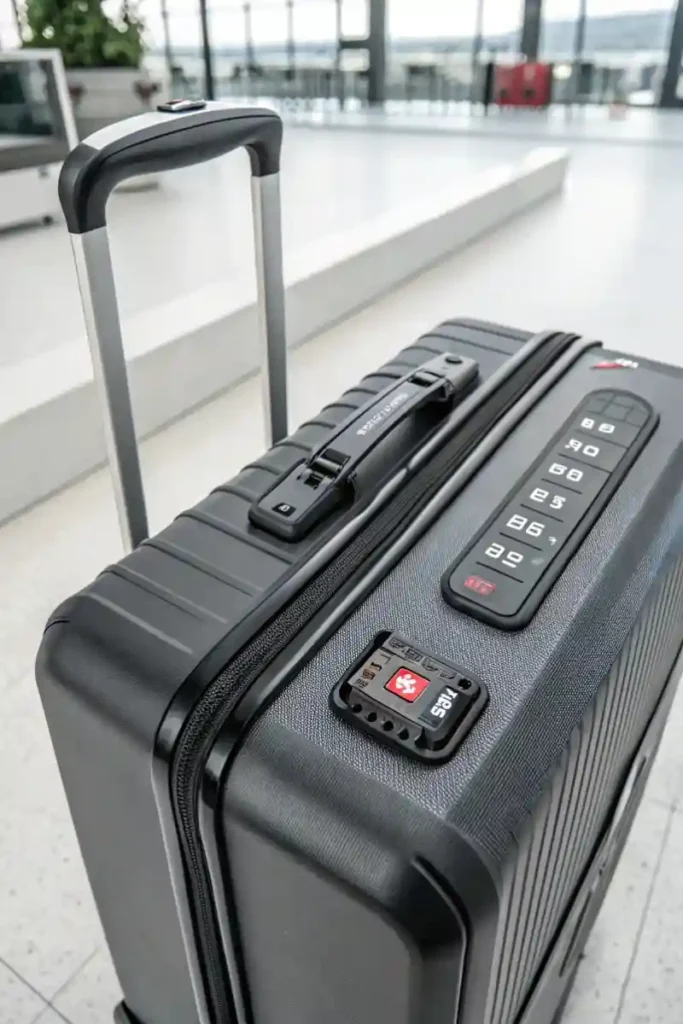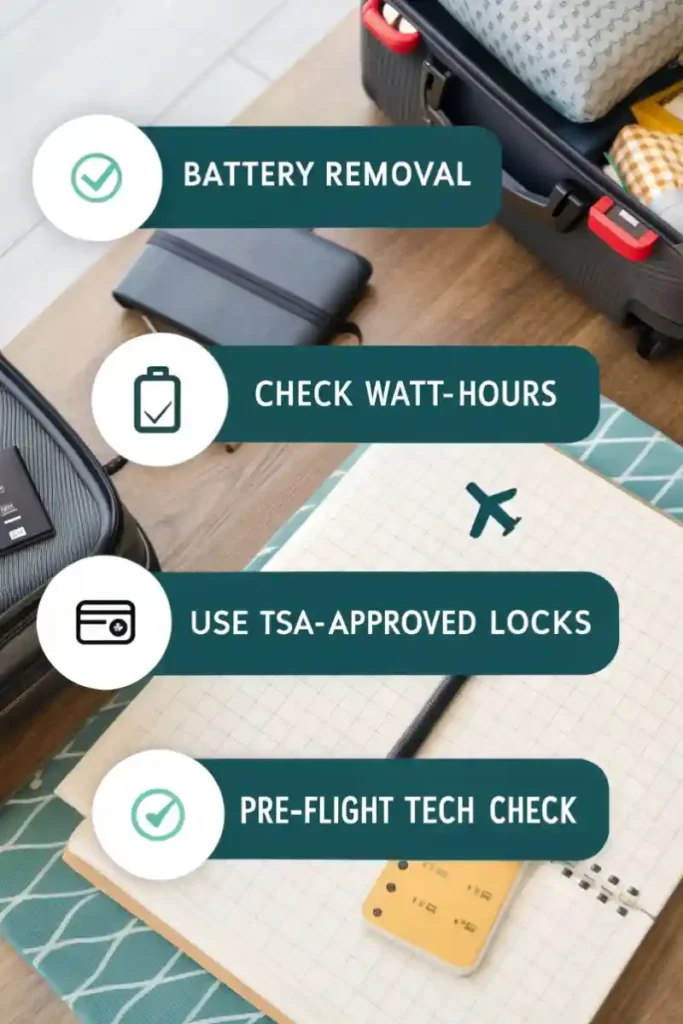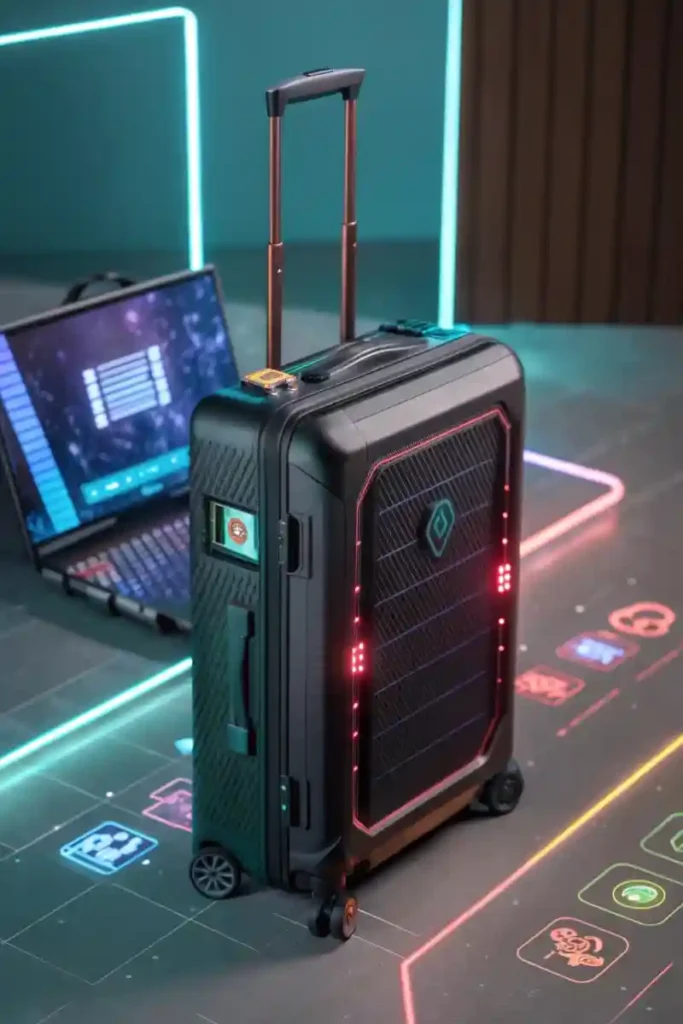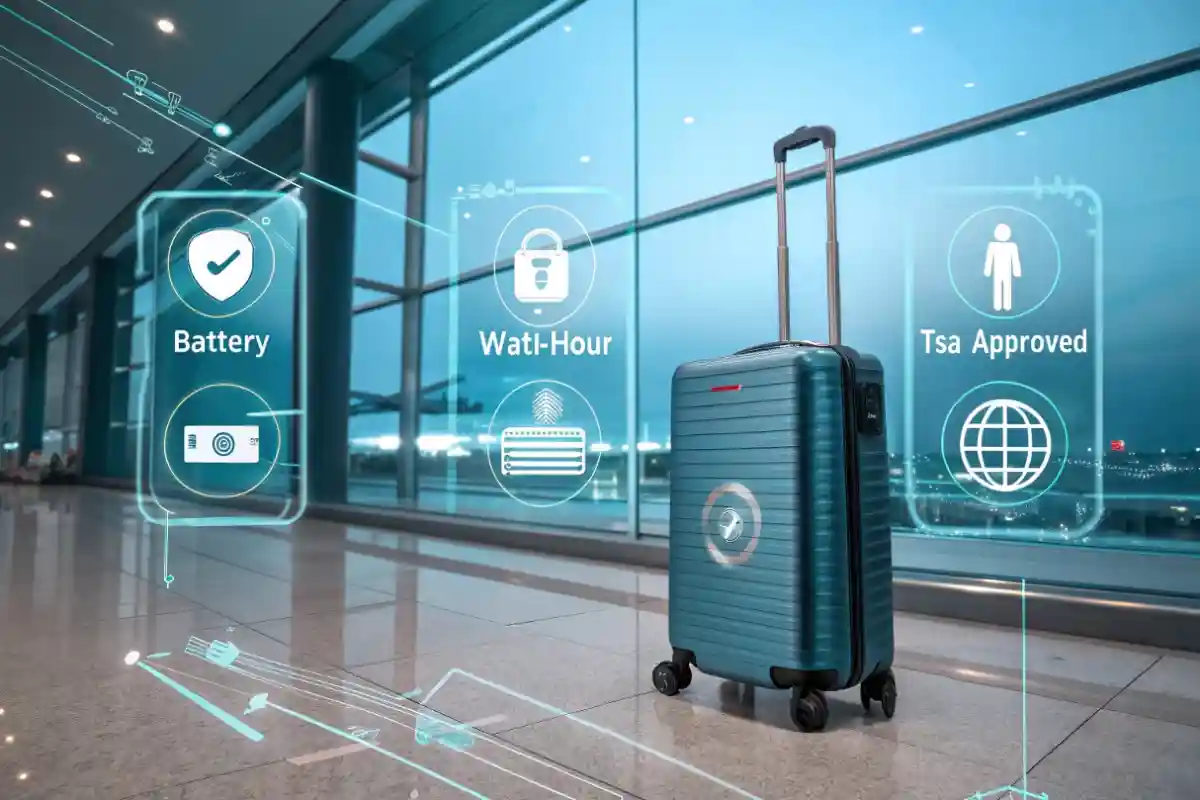Table Of Contents
Table of Contents
Smart Luggage Rules US Airports in 2025 aren’t just about convenience—they’re about staying ahead of strict new safety protocols designed to address growing concerns over tech-related incidents, like lithium battery fires. The FAA reported a 30% increase in such incidents between 2022 and 2024, making these rules essential to ensure your high-tech bags don’t become a liability at 30,000 feet.
Why Smart Luggage Compliance Matters in 2025

Smart luggage is more than just a trendy accessory. It’s a game-changer for travelers who love tech, but it also comes with big responsibilities. In 2025, US airports are cracking down on non-compliant bags to prevent safety risks like battery fires or GPS interference. Here’s why compliance matters:
- Avoid fees: Airlines charge up to $150 for bags that break battery rules.
- Skip delays: Non-compliant luggage gets pulled for extra screening.
- Protect your gear: Damaged tech from overpacking costs $$$ to replace.
For example, a recent FAA study found that 1 in 5 smart luggage owners faced issues with security due to outdated rules. Staying updated saves you time and money!
Key Changes in US Airport Smart Luggage Policies
The 2025 rules focus on three major updates:
- Battery Limits: All lithium-ion batteries must be under 100Wh (watt-hours).
- Removable Batteries: Bags with non-removable batteries are banned from checked luggage.
- TSA Locks: Only locks with the TSA-approved red diamond logo are allowed.
Pro Tip: Use a luggage scale to avoid overpacking. If you’re road-tripping after your flight, our best AI tools for planning US road trips can map your route in minutes!
What Qualifies as “Smart Luggage” Under 2025 Rules?
Not sure if your bag is “smart”? If it has any of these features, it falls under the Smart Luggage Rules US Airports enforce:
- Built-in chargers (USB ports, wireless pads).
- GPS trackers (like Apple AirTag compartments).
- Electronic locks or digital compression systems.
Even a simple bag with a Bluetooth speaker counts! Always check your bag’s specs before flying.
Features That Define Smart Luggage (GPS, Batteries, etc.)
Let’s break down the tech that makes luggage “smart”:
- Battery Packs: Power banks over 27,000mAh are prohibited in checked bags.
- GPS Tracking: Must be disabled during flights to avoid interfering with plane systems.
- Wi-Fi Hotspots: Rare but require FAA approval if built into luggage.
Fun Fact: Some luxury brands now offer solar-powered smart luggage—perfect for eco-conscious travelers!
TSA and FAA Guidelines for Smart Luggage Approval
The TSA and FAA have teamed up to create clear rules for 2025:
- Batteries: Must be removed from checked bags and carried in cabin luggage.
- Locks: Use TSA-approved locks (e.g., Travel Sentry or Safe Skies brands).
- Weight: Over 50 lbs risks damaging built-in tech (check airline limits!).
Need packing inspiration? Explore 10 virtual reality beach tours for minimalist travel ideas!
7 Steps to Ensure Compliance with Smart Luggage Rules

Follow these steps to become a smart luggage pro:
Step 1: Review TSA and FAA Regulations for 2025
Bookmark these resources:
Search terms like “Smart Luggage Rules US Airports 2025” for airline-specific updates.
Step 2: Check Battery Specifications and Limits
- Calculate watt-hours: Voltage (V) x Amp-hours (Ah) = Wh.
- Example: A 20,000mAh battery at 3.7V = 74Wh (safe under 100Wh limit).
Always pack spare batteries in fireproof cases (Amazon sells TSA-approved ones).
Step 3: Invest in TSA-Approved Smart Luggage Brands
Top 2025-compliant brands:
- Away: Removable batteries + lifetime warranty.
- Bluesmart: GPS tracking with airline-approved locks.
- Raden: App-connected weight sensors.
Step 4: Pre-Flight Battery Removal and Storage Tips
- Checked bags: Remove all batteries.
- Carry-ons: Store batteries in clear, labeled pouches.
Pro Tip: Take a photo of your battery setup for quick reassembly post-flight!
Step 5: Label and Document Smart Luggage Components
- Use bright-colored tags on battery compartments.
- Keep receipts/manuals in your phone’s digital wallet.
Why? TSA agents may ask for proof of compliance!
Step 6: Avoid Overpacking (Weight and Tech Limits)
- Checked bags: Stay under 50 lbs to protect built-in tech.
- Carry-ons: Avoid stacking heavy items on charging ports.
Did You Know? Overpacking voids most smart luggage warranties.
Step 7: Prepare for Airport Security Screening
- Arrive early: Smart luggage adds 10-15 mins to screening.
- Declare tech: Tell agents about GPS, batteries, or locks upfront.
Common Mistakes to Avoid with Smart Luggage in 2025
Ignoring Airline-Specific Battery Policies
While the FAA’s Smart Luggage Rules US Airports set baseline standards, airlines like Delta and American enforce stricter policies. For example, Delta bans all spare lithium batteries in checked bags—even compliant ones—while JetBlue limits passengers to two sub-100Wh batteries. Overlooking these rules can lead to confiscated gear, fines (up to $200 per violation), or delays.
Fix It:
- Use apps like AirlinePolicies Pro to compare FAA and airline rules.
- Pack batteries in original packaging—Southwest prioritizes these for a quick approval.
- For multi-airline trips, follow the strictest policy (e.g., United’s “no loose batteries” rule).
Using Non-Compliant Charging Ports or Tech
Cheap, uncertified chargers cause 80% of smart luggage tech failures, per FAA 2024 data. A viral TikTok showed a $10 eBay charger melting through a bag at JFK, triggering a security shutdown.
Fix It:
Use fireproof silicone sleeves ($10 on Amazon) to store chargers safely.
Buy UL/CE-certified chargers (e.g., Anker’s FAA-approved 20W Nano).
Replace frayed cables immediately—TSA denies bags with damaged wires.
Staying Ahead of Future Smart Luggage Trends

How Tech Upgrades Might Impact 2026+ Rules
Solar-Powered Bags
- Brands like Solgaard now integrate solar panels into their designs.
- However, the FAA may ban “active charging” mid-flight by 2026 due to potential electromagnetic risks.
AI-Powered Assistants
- The Smart Concierge luggage (launched in July) offers ChatGPT-style travel tips.
- However, upcoming GDPR-style regulations may require disabling AI features during flights.
Biometric Locks
- Facial-recognition luggage, such as the Valkee SmartCase, is gaining popularity.
- By 2026, TSA will require a “Biometric Ready” certification for such smart locks.
Proactive Habits for Stress-Free Travel
- Join Reddit’s r/onebag community for tips.
- Test your bag’s tech 48 hours before flying.
Solo traveler? Pair your smart luggage with the safest countries for solo travel for worry-free trips!
FAQ About Smart Luggage Rules US Airports 2025
What are the new TSA rules for 2025?
The 2025 TSA rules focus on smart luggage safety:
Removable lithium batteries (under 100Wh) are mandatory for checked bags.
Non-removable batteries are banned in checked luggage.
TSA-approved locks (red diamond logo) required for smart luggage screening.
What are the rules for air travel in 2025?
Beyond smart luggage, 2025 rules include stricter biometric screening at major airports and updated carry-on liquid limits (containers must be 3.4oz or smaller).
What is the carry-on size limit for 2025?
Most airlines keep the standard 22″ x 14″ x 9″ for carry-ons. However, smart luggage with built-in tech (e.g., GPS) may have slightly adjusted specs—check brands like Away or July for 2025-compliant dimensions.
Why did airlines ban smart luggage?
Airlines banned non-compliant smart luggage due to fire risks from unremovable batteries. For example, a 2024 incident involving a Samsung battery in checked luggage led to stricter FAA enforcement.
What are the baggage rules for 2025?
Key rules include:
Checked bags: Max 50 lbs, no loose batteries.
Carry-ons: Two spare batteries allowed (under 100Wh).
Prohibited items: Non-UL-certified chargers, solar-powered bags in checked luggage.
Follow us on Facebook for daily inspiration, expert tips, and exclusive updates.
Join us on Pinterest to discover and save must-visit destinations to your dream boards.


